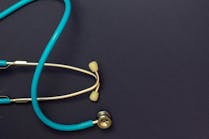Underlining, not undermining, supply chain service to critical care
From clinical, financial and operational standpoints, the COVID-19 pandemic brought a critical-care attitude and mindset to healthcare delivery due to the serious nature of the viral spread and the mortality rate of certain patient population segments.
As revealed by the overall industry response (healthcare and beyond), the pandemic stretched, strained and bent the supply chain , along with most other operations within healthcare organizations. But, some critics argued the pandemic actually caused the supply chain to buckle and even break, basing their opinions on product shortages, backlogged orders and supplier shipping/receiving response times that limited inventory access and availability.
For critical care nurses who must be ready to act in a moment’s notice as a key part of their mission and occupation, what they do represents standard operating procedure within the pressure cooker environment of the intensive care unit (ICU) and cardiac care unit (CCU).
It’s not necessarily that critical care continually works in crisis mode, but crises certainly happen more frequently than not, and in a different way than, say, within the Emergency Room at a major inner-city hospital.
While many facilities experienced “pandemic-related” supply disruptions daily for the last two years, critical care clinicians feel they have experienced the same for even longer.
Per Healthcare Purchasing News interviews with critical care nurses during the last two decades (search HPN Online), the supply chain issue centers more on priority, recognition, respect and understanding for product and service requests that too frequently turn into demands as clinical pressure mounts.
Being creative
A frontline nurse in the emergency and radiology departments at University of California San Francisco Health and John Muir Health, Wells received a simple but curious text from a colleague in New Jersey in the Spring of 2020 that read, “We are running out of isolation gowns!” Wells expressed confusion for her, recalling that “the mere idea of running out of such basic inventory at a large hospital seemed ridiculous.”
The magnitude of the situation hit home for Wells when she started receiving instructions to wear her “one-time-use” PPE – first, N95 masks for a whole shift, then for several shifts, and then as long as the mask would hold up. “I found out that this phenomenon was happening across the country, and as a nurse who always wanted to fix problems, I started looking into a solution,” she said.
Wells eventually organized an effort to get PPE to frontline healthcare workers throughout the nation, called the “PPE Care Package Project.” At the height of the PPE shortages, according to Wells, the project distributed more than 7,800 PPE items to more than 240 individuals and facilities in 37 states and Mexico during 2020 and 2021.
“My project was just one of thousands where individuals in need of items due to the supply chain shortages came together with their resources to help fill the gaps,” Wells said. “From this experience, I learned that healthcare workers are incredibly creative and resourceful when it comes to keeping themselves and their patients safe.”
Wells, Founder of New Thing Nurse (www.newthingnurse.com), which helps nurses make academic and professional changes and decisions in their careers and lives, was one of 18 nurses who received the AACN Circle of Excellence Award in 2021. She was nominated by nurse colleagues in part for her efforts to address the PPE shortage. Wells also is a member of the American Association of Critical Care Nurses (AACN), which is hosting its 2022 National Teaching Institute this month in Houston.
“At the outset of this pandemic, we all heard about the critical PPE shortages and the challenges it created for our medical response teams. It was through creativity and teamwork that we saw N95 respirators being decontaminated and reused in order to navigate the shortages and allow our healthcare workers to continue to urgently care for patients,” Nageotte said. “This quick adaptation and creation of a new process also meant thinking through how to store, move and contain contaminated or sensitive supplies most efficiently and safely. There was great collaboration between government agencies, healthcare suppliers, and healthcare facilities. This is an area of focus for Diamond Storage Solutions – to find similar ways to support creativity, quick adaption and flexibility.”
“When many hospitals were approaching capacity during the pandemic, they faced the unique challenge of creating temporary ICU spaces within their existing footprints,” Wittwer indicated. “Through creative problem solving, clinicians established new ICUs and isolation areas by reimagining existing spaces like outpatient surgery areas, as well as borrowing and repurposing medical equipment from other departments.”
Repurposing operational areas, as well as integrating software, emerged as much of a strategy as repurposing products through proper reprocessing protocols.
“This reliance on existing systems was a necessary step to care for patients during a critical period, but it also reinforced the importance of vendor-neutral clinical software,” Wittwer continued. “For example, if a hospital’s Med/Surg area needed to shift its purpose to accommodate COVID patients, clinicians were likely using an assortment of equipment from multiple vendors. Ascom’s Digistat and Unite software solutions were the glue that held together many of these temporary ICUs, enabling clinicians to view patient data on a single interface, even when pulling data from monitors, beds or IV pumps made by other companies.”
Wittwer foresees this strategy as becoming a standard tactic going forward.
“Hospital leaders made the most of existing resources over the past few years, and I believe that adaptable mentality will continue,” he said. “We are embracing this agile approach at Ascom and continuing to find new ways to manage alarm flow in non-traditional physical spaces.”
Dräger saw increased demand for mechanical ventilators, physiologic monitors and anesthesia machines as well as consumables and operating supplies, at many facilities, according to Edwin Coombs, RRT-NPS, ACCS, FAARC, Senior Director of Marketing, Portfolio Solutions Training, Clinical Affairs, & Intensive Care.
Coombs recalls that logistics pressure within critical care areas wasn’t limited to distribution and supply, but also experienced by maintenance and repair.
“Our technical repair teams worked around the clock and weekends to fulfill service requests, which not only included new device installation but also legacy devices that were in long-term storage, back to a state of operational readiness for patient use,” he said. “Suppliers and providers working in close communication and collaboration with logistics and safety precautions was absolutely essential for success.”
Disaster response eye-opening
The pandemic seemed to open a Pandora’s box full of crisis response plans that didn’t go far enough or weren’t there at all, observers contend.
“The pandemic experience has brought to light many challenges that we will continue to face,” Dräger’s Coombs lamented. “While the national strategic stockpile of standard ventilators was released and saved lives, due to the complex nature of the COVID-19 disease many critically ill patients required a higher acuity device. Additionally, many hospitals indicated that they learned the value of having a minimal supply of consumable supplies on hand, including PPE as a ‘safety stock’ where the approach before the pandemic was often a ‘just-in-time’ stock approach.”
In fact, Wells still sees the main supply challenges faced by Critical Care to be “obtaining what they need to offer safe and effective patient care” and “having the equipment and supplies that they need when they need them,” she added.
“Throughout the pandemic, nurses and other healthcare workers have not had the correct supplies that they need,” Wells said. “Medications, PPE, cleaning supplies, medical equipment, oxygen and more have not been available when they need it within their facility. This has been due to issues as varied as limited vendor contracts, barriers to labor, increased price of fuel and issues with production. If healthcare workers do not have the correct supplies they need when they need it, and if a workaround cannot be found, this can mean the difference in life or death for our patients.”
Despite the overall global economic reasoning behind supply chain challenges, pandemic-related or not, Ascom’s Wittwer argues that the critical care areas likely will suffer the most because of what they do and the technology on which they rely.
“Supply chain issues are negatively impacting critical care environments more than any other area of the hospital in part because ICUs are the most dependent on technology,” he noted. “Clinicians need a complex set of tools to take care of patients in the ICU – from IV pumps and complex patient monitors to rotating smart beds. The core components of these electronic systems are impacted by global supply chain disruptions, so hospitals are encountering longer lead-times for this technology.”
Still, Diamond’s Nageotte appreciates the flexibility and nimbleness critical care nurses must practice on a daily basis and praises the suppliers that do the same.
“In critical care settings, being able to respond, adapt and pivot quickly under ever-changing circumstances and demands is crucial,” she said. “When you have good systems, process and equipment in place, it creates an environment that supports this needed flexibility. At Diamond Storage Solutions, we incorporate Lean principles into everything we do – from the management of our business to the product portfolio we offer and the way we innovate new solutions. Lean creates the flexibility needed to respond and react quickly to changing requirements and pressures. By applying Lean principles to storage areas, you can create a more efficient space, reducing the amount of time searching for supplies and limiting waste from stockouts or overstock.”
Smoothing rough edges
While the pandemic may have exposed systemic process shortcomings, it also ignited motivation for and pursuit of strategic and tactical solutions – or at the very least, what works. It’s something about which Wells as a veteran nurse understands.
“Bedside staff have faced supply chain shortages for decades and have often found workarounds, or in nursing, what we call ‘nurse hacks,’” she said. “This is an instance where you use something not for its intended use but what works in a pinch. Nurses and other healthcare workers are incredibly innovative, especially when under pressure. This has kept healthcare working throughout times like the COVID-19 pandemic.”
Wells mulled how “nurse hacks” or workarounds might be applied globally.
“In a more global sense, interventions like more fluid vendor contract language, budgets that accommodate for fluctuations in costs of supplies, having alternative items already pre-selected in the case that a choice item is not available, and working to have buffers on key supplies may be ideas to help mitigate supply chain shortages in the future,” she suggested. “Healthcare will have to continue to be innovative to stay on top of supply chain challenges.”
Nageotte points to storage organization and orientation as making a difference.
“It starts with understanding your storage needs and goals, and then selecting the right equipment to create the flexibility and versatility needed, and then wrapping good Lean processes around the solution,” she advised. “You may have heard of terms such as ‘visual management’ or ‘Kanban’ – all good tools to ensure that supplies are easily found, easily accessible and easily replenished. Especially now, with everyone experiencing staff shortages and high turnover, having the right storage solution with good process around it helps create better communication, more efficient training, and happier employees, which ultimately assists with employee retention.”
Critical Care and Supply Chain must collaborate on this, Nageotte encourages.
“It’s important that the solution work for everyone,” she said. “Supply Chain needs a system that supports accurate PAR levels and quick replenishment, and nurses need to be able to find inventory quickly and when needed. Good communication and a visually managed system [are] the link between the two.”
For Coombs, healthcare providers and clinicians alike must be able to pivot to alternatives.
“Many ‘first steps’ have been undertaken, which includes development of new policies for the use of alternative use devices that can supplement a device fleet subject to FDA approval for alternative use or emergency-use-only provisions,” he indicated. “One such example in response to the FDA alternative-use declaration was the use of anesthesia machines as critical care ventilators. While this is out of the normal realm of operations, having a pre-approved policy and procedure in place will streamline a practical solution.
“Dräger created a resource library of documents that hospitals rely on for such alternatives including alternative devices, oxygen consumption calculators, and policy statements to support hospital’s decision making,” he continued. “In some states, local governments have also mandated a 90-day supply of items such as PPE to prevent supply shortages and maintain safety of healthcare staff.”
The overarching mentality involves the phrase “future proof,” according to Wittwer.
“The pandemic reinforced the importance of ‘future-proofing’ hospitals,” he observed. “Looking ahead, I hope to see hospital leaders take a more proactive approach and reach out to technology vendors like Ascom to address their clinical communication challenges now, before they snowball into larger concerns down the road. Because no two hospitals are alike, Ascom also envisions stakeholders like CNOs, CIOs and clinical IT departments playing a greater role in the software design process for their facilities.”
Process and technology standards adoption and implementation goes a long way, too, according to Kelly Feist, Managing Director, Ascom Americas.
“Now that major advancements in imaging and electronic medical records are universal, we need to focus on using technology to benefit the care providers and the patient through improving workflows, collaboration and communications,” Feist said. “Only a small percentage of hospitals in the U.S. have implemented these kinds of solutions in a holistic way, so there is an opportunity for technology solutions to tie it all together for them.”
Making a supply chain difference with critical care in a pinch
Healthcare Purchasing News asked critical care nursing and product experts for examples of a particular product or service released during the last pandemic-engulfed 2020-2021 time frame that alleviated or helped to solve a specific critical care challenge. Here’s what they shared.
“At the height of PPE shortages, especially with disposable respirators, I helped source and educate frontline healthcare workers on how to appropriately use and get elastomeric half mask respirators. These masks are commonly used in the construction and disaster response fields but less in the hospital setting. An elastomeric half mask respirator offers a cleanable, reusable and sustainable alternative to disposable N95 masks. Through this effort, frontline healthcare workers and their patients were kept safe at the height of the COVID-19 pandemic.”
Sarah Wells, R.N., CEN, CNL, Emergency and Radiology Nurse, University of California San Francisco Health and John Muir Health; Founder, New Thing Nurse; and 2021 AACN Circle of Excellence Award recipient
“Through ICON, located in Baltimore, MD, Dräger was able to support several hospitals that were faced with a shortage of ventilators during the peak of the pandemic with its Carina ventilator. This program was in place after the [2011] Joplin, MO, tornado as a proactive program to support distressed hospitals that are in need of mechanical ventilators. Additionally, the FDA provided ‘Emergency Use Authorization’ (EUA) for the V600/V800 ventilators ,which several hospitals sought after as a solution. As a follow-up with these customers, these activities absolutely made a difference and helped save lives.”
Edwin Coombs, RRT-NPS, ACCS, FAARC, Senior Director of Marketing, Portfolio Solutions Training, Clinical Affairs, & Intensive Care, Dräger
“This pandemic has sparked ideas for us in creating more flexible and efficient storage solutions, allowing healthcare workers to be better equipped and resilient during these critical response times. We are building solutions with healthcare providers to ensure they have storage solutions that actually work for them. We design storage solutions with and for them so they can focus on what really matters – taking care of others (themselves included)!”
Jennifer Nageotte, Partner, Diamond Storage Solutions
“Ascom’s Digistat clinical workflow software suite offers advanced functionality for medical device integration, wearables monitoring, clinical decision support and alarm management for communications workflow solutions. Combined with Ascom’s Unite messaging suite, the solution delivers end-to-end clinical workflow and communication support for acute care environments designed to help them reach the goals of the quadruple aim. Digistat provides clinicians with patient physiological information and displays alarms occurring on connected medical devices. Data from those devices flows into an Ascom clinical decision support system (CDSS) engine to calculate various clinical scores, produce fresh data outputs and share action notifications, if needed.
“Most major players in the information communication technology (ICT) space have some form of multi-parameter software that takes inputs from different medical devices and pushes out alerts to a clinician’s mobile device. Ascom’s differentiator is our device integration tool. Not only can we filter and pass-through alarms and alerts from other systems, but we can also put a system in place that looks at multiple data points to compile and alert on a comprehensive view of the patient condition, taking inputs from multiple different systems.”
Robert Wittwer, Senior Vice President of Professional Services, Ascom Americas

Rick Dana Barlow | Senior Editor
Rick Dana Barlow is Senior Editor for Healthcare Purchasing News, an Endeavor Business Media publication. He can be reached at [email protected].









